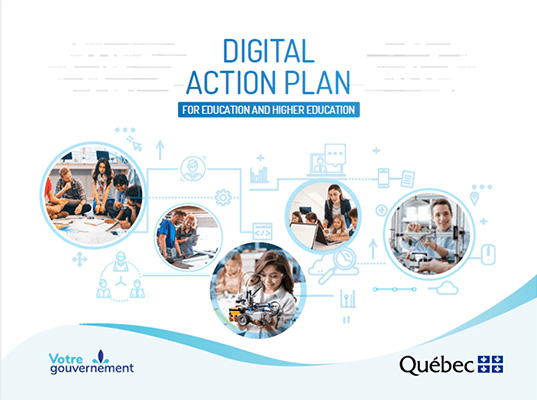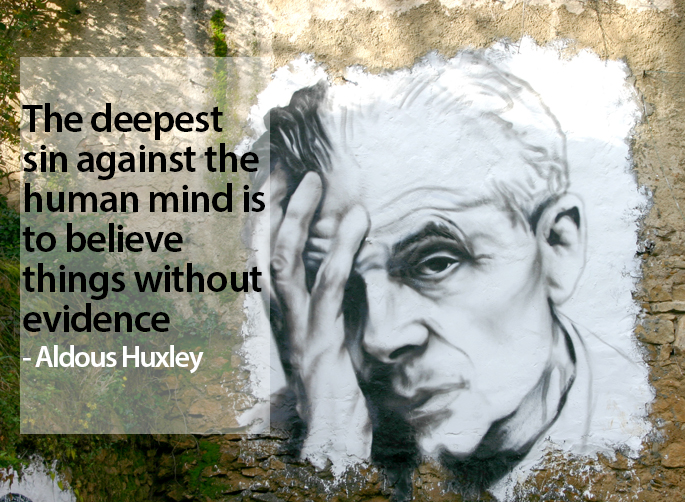 Tablets, most often though not exclusively iPads, are fast making their way into the class. I’ve often been asked whether they should be put in the hands of kindergarten children and, in my answers, I sometimes find myself skating around a variety of key words that include play, 21st century, meaningful, and, key of keys, the Quebec Preschool Education Program.
Tablets, most often though not exclusively iPads, are fast making their way into the class. I’ve often been asked whether they should be put in the hands of kindergarten children and, in my answers, I sometimes find myself skating around a variety of key words that include play, 21st century, meaningful, and, key of keys, the Quebec Preschool Education Program.
So, I thought I’d try to put a bit of order in my thoughts.
Technology is ubiquitous in the lives of our students. Perhaps we are asking the wrong question. As preschool educators, we should rather ask questions such as “Can a tablet help us… and if so, how?” and “What practices will enrich the Preschool classroom environment in keeping with the preschool mandate”.
One thing is certain, the tablet’s portability, long battery life, ease of use, and multiplicity of specialised apps/tools make it a game changer as compared to computers, even laptops.
So, how could we use it?
 Let’s be clear: it’s not the tablet we’re talking about but rather the apps that we’ll be using and how we will be using them. So, before judging apps, I decided to establish a reflection grid to help decide whether an app can fit into our activities and our class organisation in a way that is in keeping with the Québec Preschool Education Program. The preschool mandate is the first item. Note that it is NOT one of formal instruction and subject areas. Then, I made 4 columns which highlight four key aspects:
Let’s be clear: it’s not the tablet we’re talking about but rather the apps that we’ll be using and how we will be using them. So, before judging apps, I decided to establish a reflection grid to help decide whether an app can fit into our activities and our class organisation in a way that is in keeping with the Québec Preschool Education Program. The preschool mandate is the first item. Note that it is NOT one of formal instruction and subject areas. Then, I made 4 columns which highlight four key aspects:
- The central place of PLAY, i.e. meaningful activities and various forms of play to master reality.
- its DEVELOPMENTAL rather than instructional approach which fosters the emergence of strong foundations for future schooling. Learning activities should foster the motor and psychomotor, emotional, social, and cognitive dimensions of development.
- the CLASS ORGANISATION that supports play and active participation in stimulating environments in and out of the classroom (gym, school yard, community, nature, etc) which invite children to observe, explore, manipulate, etc.
- and finally, its PEDAGOGICAL EVALUATION through the observation and analysis of the children’s attitudes, behaviours, processes, strategies and productions to document their progress and inform our interventions.
(QEP p. 52)
Just one more tool
The easiest first step in using a tablet is to find a few applications that we can add to the list of tools that we already use. So, when asking the children to make a picture in the context of an activity, some might use paint, some crayons, and others could use a Drawing app. If you’re setting up a math center with sequencing games, you might include the tablet with an appropriate app. A Book app (that’s an app that displays a book and includes interactive features) can be used to listen to or read an animated story in a large group, immersing the children in a large screen experience You will still stop, ask questions, ask the children to anticipate, and use all the strategies you normally use when reading to them from a picture book. Later, the children can read or listen to the story in the reading corner and use its interactive features on their own.
Do your activity differently
But be forewarned. Using the app as an added tool in your usual way of doing things usually leads to discovering that the functionalities embedded in the app let you go a step further and imagine new aspects to the activity, enriching it with new twists.
The built-in still and video Camera app is perhaps the easiest and most versatile first tool to use. The camera can be used to create traces of learning, included in the child’s picture portfolio with ease, and brought out when assessing or meeting parents. The children could record their own reflections. They can use it in many other ways, for example
- Take pictures during a visit to … (fill in the blanks). Back in class, you project them and together, retell the story of the visit.
With pictures readily available in the Camera Roll it is easy to use them in a variety of contexts.
- The Camera app, in conjunction with a simple Video Creation app can be used by the children to retell a field trip, to present a science project’s observations (hatching monarch butterflies, germinating seeds, etc.)
- With experience and a good Book Creation app, you might help the children create a book from the pictures, a book which can be posted and shared so it can be viewed at home where the children can retell the activity/story in their own words. Some book creation apps allow voice recording. They all let you write text. Can you begin to see the possibilities over time? Imagine the children making an alphabet book from pictures they take, pictures of themselves shaping a letter. It would include text and voice. That book could circulate at home as well as be viewed in your reading corner.
- The email sharing functionality in most creation apps lets you imagine an activity in which an Audio Recording app is be used by the children to make an audio greeting card which they send by email.
Are we still within our evaluation parameters: constructivist, real-life, developmental, conducive to our observing a rich collection of attitudes, behaviours, processes, strategies and productions to analyse and assess? You bet!
Open-ended and creative
There are many applications that allow the children to create in electronic media. You would use them in a variety of contexts, within a meaningful activity or learning situation, just like you use all the other media in your class. But what is new is that, over time and with experience, you can now imagine projects with a scope that was impossible to imagine before.
- Your school has a policy of inviting next year’s crop of K children to show them the ropes? How about making a video to show them the school, to present the adults they’ll get to know (interviews), to show them what they will be doing in kindergarten and how much fun it is (videos and pictures)? This would be a major end of year project that targets all the competencies.
- And what about opening the class to the world: talk to buddies in other countries using the Skype app – we may have cows in our fields but they get to see kangaroos or whales or … (fill in the blanks).
- Extend their reading experience by meeting the author of their favourite book on Skype; then create your own book to send to the author.
Do not judge an app by its colour
By this I mean, it may look game-like, it may sound joyous, be animated but that doesn’t mean it fits into the kindergarten classroom play-based environment of discovery, experimentation and development. Many apps on the market have little or no pedagogical value. You’ll find books that are the equivalent of their paper version, instructional apps, the alphabet/counting/spelling/make-a-genius-out-of-your-child type, that are really just enhanced drill and practice. If you are looking for “games” to play on the tablet, look for apps that focus on cognitive abilities: logic, memory, strategy games, puzzles, games that can be played in pairs to encourage talk and problem solving. These will enrich the collection of materials you already use in class and they are in line with the Learnings Related to Cognitive Development (QEP, p.68).
Based on teacher experience, the LEARN Kindergarten Web site is building a list of a few apps that have been used in the K class and pass the Evaluation Grid test. And so, in the end, it all comes down to starting with an understanding of what makes our preschool classroom unique and bringing in the tool in a way that preserves that essence.
Further reading
- Recit du préscolaire: La tablette tactile
http://recitpresco.qc.ca/node/1035 - Encyclopedia on Early Childhood Development: Play, what can be done.
http://www.child-encyclopedia.com/en-ca/child-play/what-can-be-done.html - Child Development Institute: “Play is the Work of the Child” Maria Montessori
http://childdevelopmentinfo.com/child-development/play-work-of-children/ - Encyclopedia on Early Childhood Development : School Age Children Development and Parenting Tips
http://childdevelopmentinfo.com/ages-stages/school-age-children-development-parenting-tips/ - Blog: Play Based Classroom. A preschool educator shares her experiences.
http://play-basedclassroom.blogspot.ca/





Congratulations on your first post on the LEARN blog! It was worth the wait, Christiane.
Thanks for including the simple and easily adaptable Reflection Grid – useful at all levels.